Sourdough Dutch Crunch Bread
Sourdough Dutch Crunch Bread gets it’s name from the most amazingly crunchy crust that shatters with every bite. As the bread bakes, the crust splits into deeply browned striations, which is why it’s also known as Tiger Bread. Whatever you call it, it’s really something special.
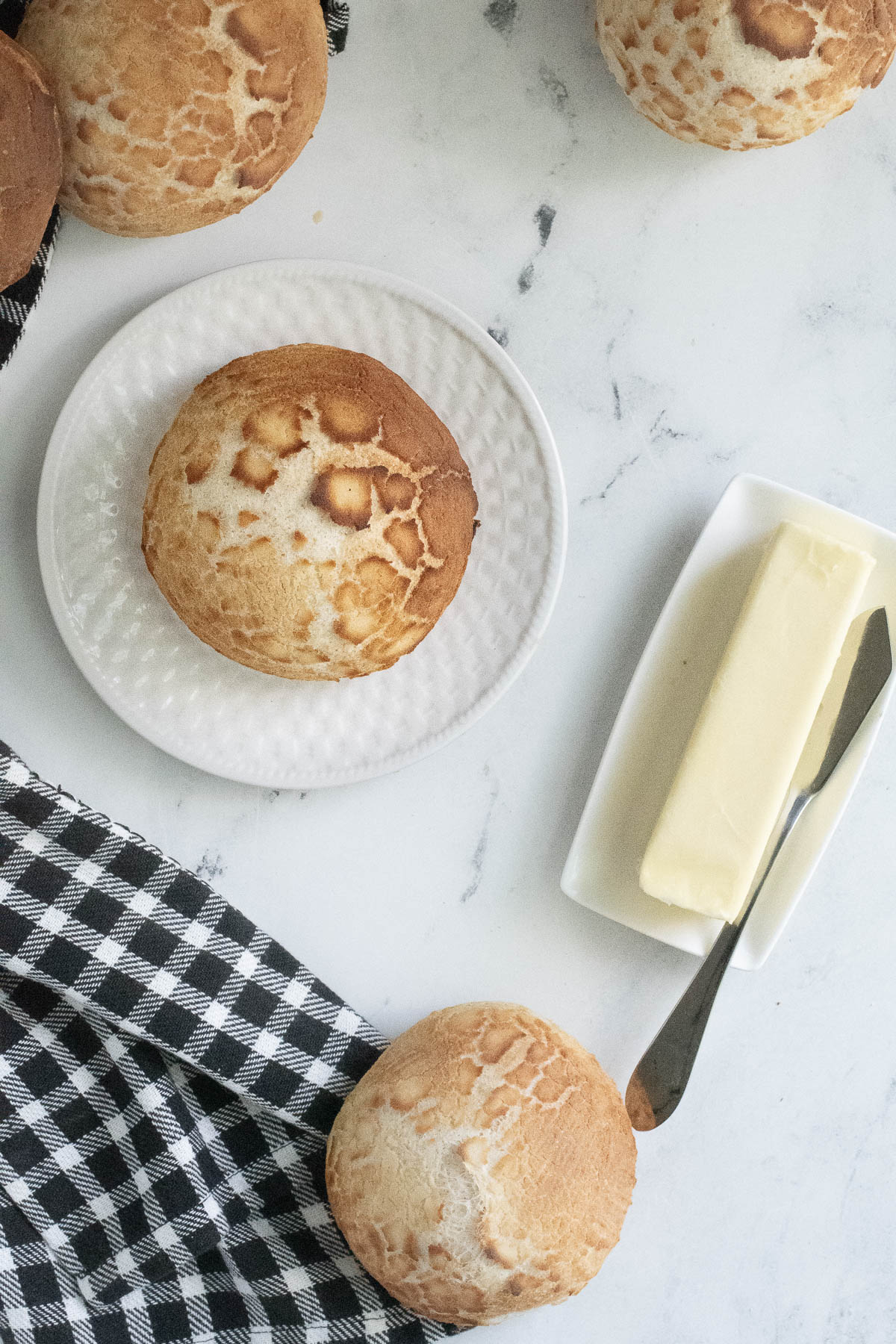
Table of contents
Why this recipe stands out
Years ago, while doing recipe research in old Dutch cookbooks I kept coming across recipes for Tiger Bread (Tijgerbrood in Dutch) or Tiger Rolls (tijgerbolletjes).
In the US Tiger Bread is called Dutch Crunch Bread and in the UK it’s known as Giraffe Bread. Whatever you call it, with it’s soft interior and crunchy top, it’s fabulous!
My original Dutch Crunch Bread made with commercial yeast is an adaptation of the recipes I found in those Dutch books.
Now I’m happy to share this new recipe for Sourdough Dutch Crunch Bread.
It took a few rounds of testing to nail this recipe, but I’m thrilled with the results. You can read more about the detailed testing I did in the Baking Science section below.
The dough can be baked as a loaf or as individual rolls. I like to make rolls because then you get maximum crust to crumb ratio. But a loaf of bread with the cracked crust is beautiful. You can’t go wrong either way. You’ll find instructions for both in the process photos.
If you’re looking for more ways to put your starter to work, don’t miss the list of my favorite sourdough recipes at the end of this post.
Ingredients
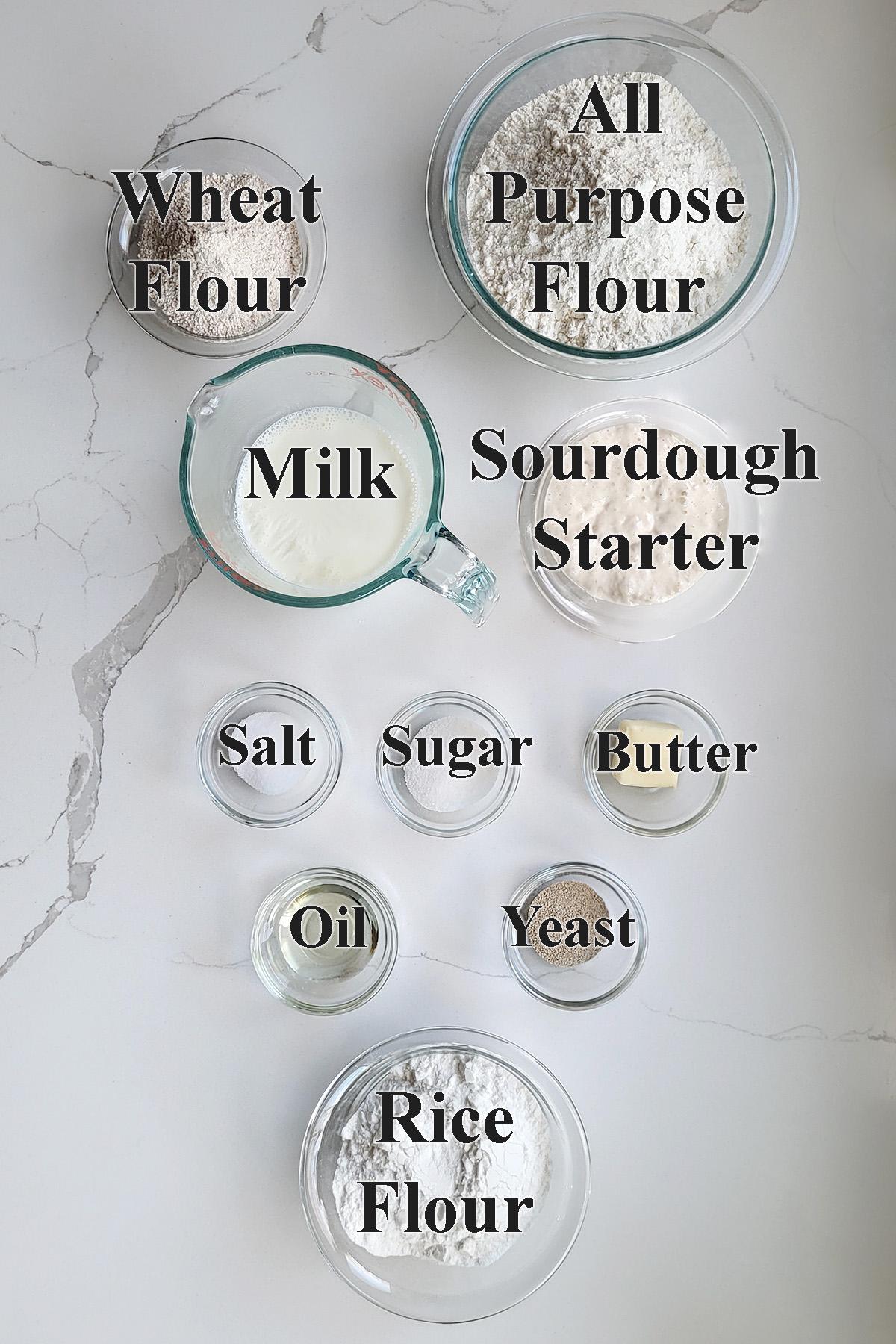
Ingredient Notes
- Sourdough Starter – The recipe was developed using a 100% hydration starter. If your starter has a different hydration percentage you’ll need to adjust the water or flour in the recipe as needed.
- Whole wheat flour – Traditionally, this bread is made with white flour. But I find a hint of whole wheat flour adds an interesting background flavor and nice crumb texture. You can use all AP flour or increase the wheat flour to up to half the total flour in the recipe.
- All purpose flour – Medium protein AP flour has enough protein to form a strong gluten network in the dough so it rises nicely in the oven. But it also makes a tender crumb.
- Whole milk – Milk tenderizes the bread and helps with browning. Scalding the milk before mixing the dough alters a protein in the milk which can interfere with gluten development.
- Butter/Sugar – Both are tenderizers and add flavor.
- Rice flour – See the following Baking Science section for more information.
- Dry Yeast – See the following Baking Science section for more information.
Baking Science: the secret to the crunchy crust
The rice flour paste that’s brushed onto the dough is what gives Dutch Crunch Bread its signature look and crackle. The reason it works comes down to the properties of rice flour and yeast.
- Why rice flour crackles: Rice flour doesn’t form gluten, so when it’s mixed into a paste it’s not stretchy like a wheat flour paste. Initially, rice flour absorbs less moisture than wheat, but once it hits the heat of the oven it quickly dries out and becomes brittle. As the dough rises and pushes on the dry coating it “crackles”, forming the characteristic “tiger” pattern.
- Why use commercial yeast in the topping: A little yeast in the topping aerates the paste and makes the topping light and crunchy. To keep this a “true” sourdough recipe, I tested the topping with my sourdough starter instead of commercial yeast. Wheat flour starter contains yeast for sure, but it also has gluten. The paste made with my wheat starter was stretchy and didn’t crackle into flakes in the oven. If you keep a rice flour starter you can experiment with using that, but for most bakers, commercial yeast is the reliable choice.
Step by Step Photos
See the recipe card for detailed measurements and instructions.
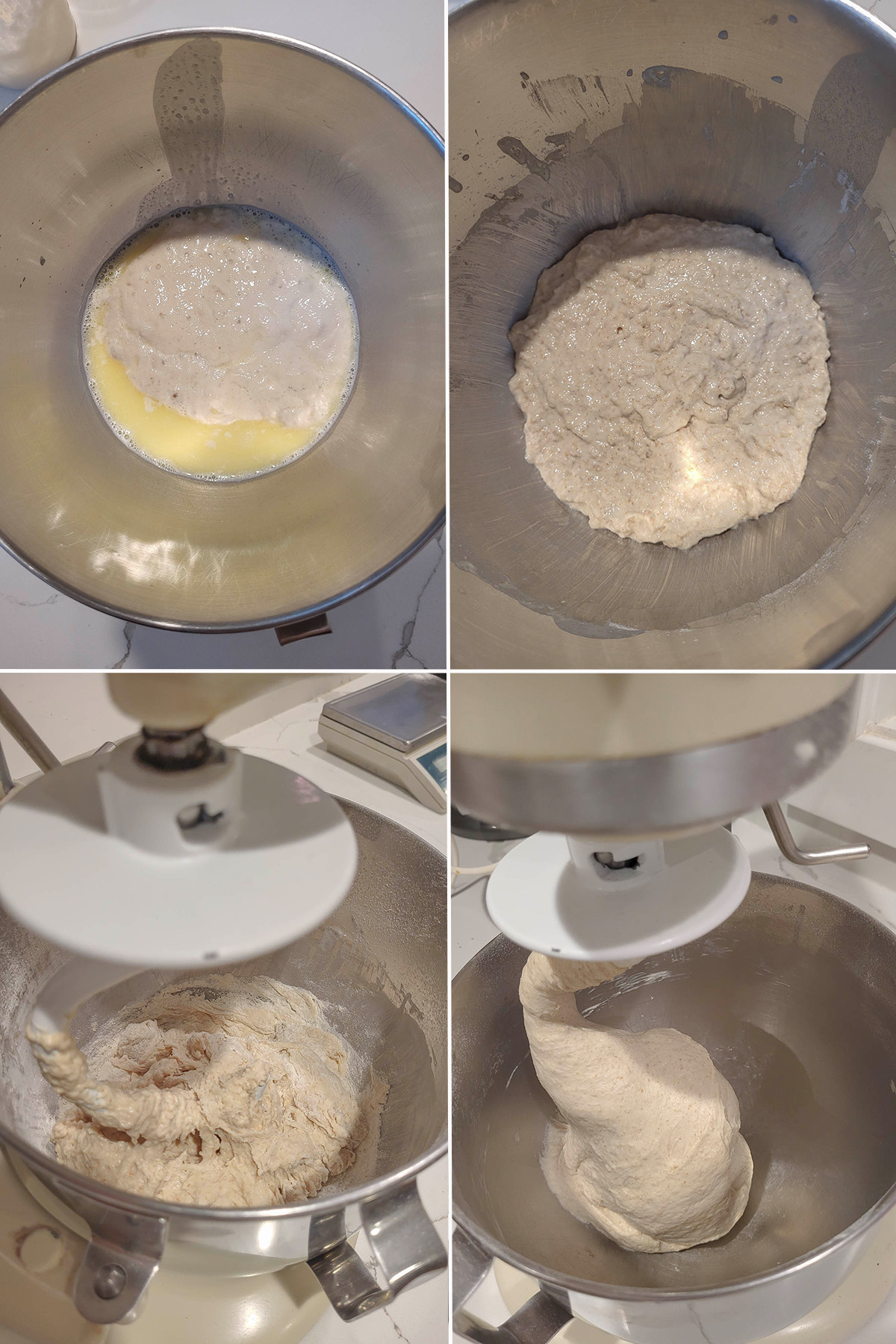
Mix the dough
- In a mixer bowl, combine the starter, milk butter, sugar and a cup of flour to form a thick batter.
- Switch to the dough hook.
- Add the remaining flour and knead for 5 minutes.
- The dough should clear the sides of the bowl and cling to the dough hook.
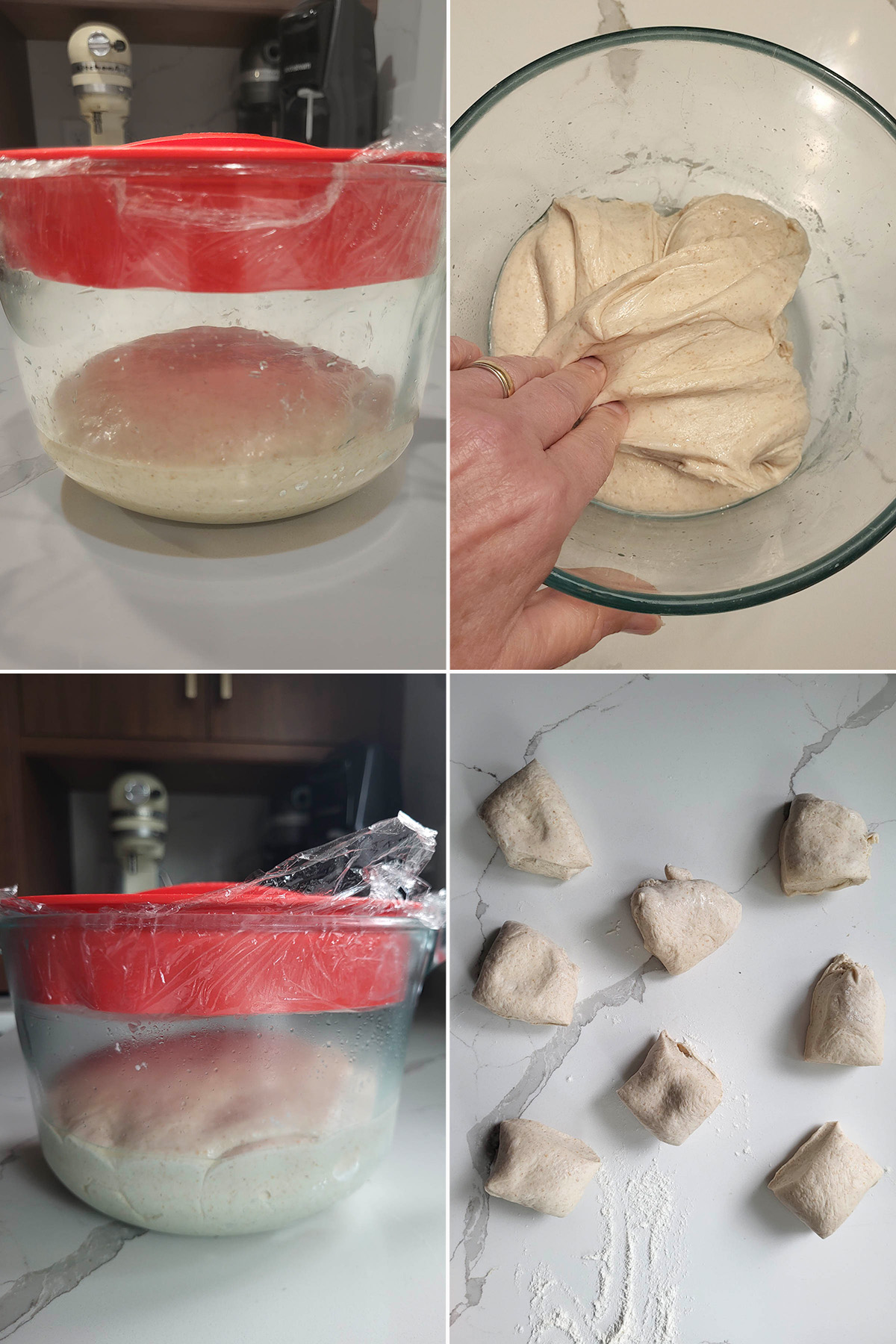
Fermentation & Overnight Retard
- Set the dough aside at room temperature for the initial fermentation.
- Every hour fold and flip the dough.
- After 3-5 hours the dough can go into the refrigerator overnight.
- The next day you’re ready to shape the rolls or loaf.
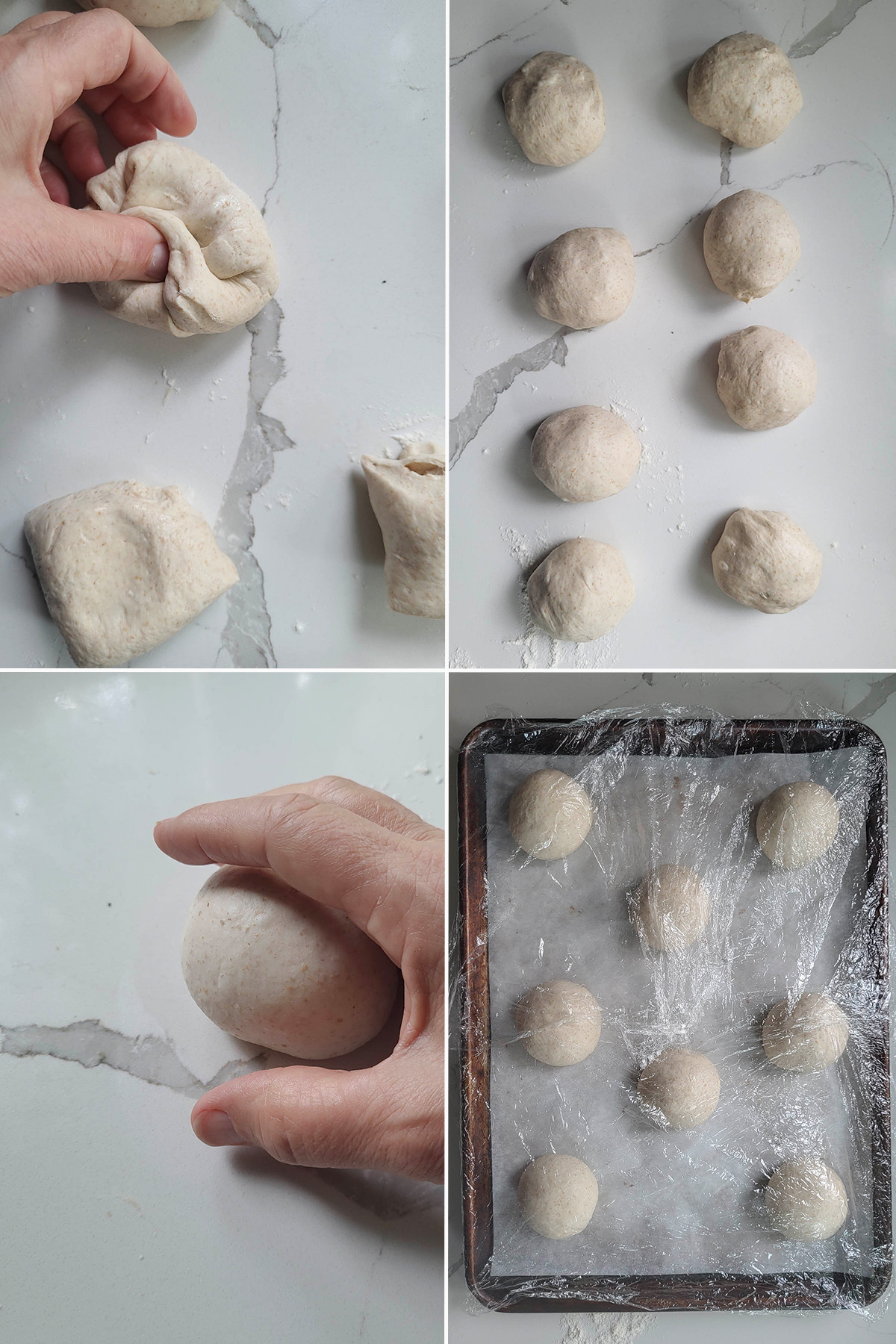
Form the Rolls
- Fold each piece of dough onto itself to form a rough ball.
- Roll the ball of dough under your cupped hand to form a tight ball. The tight skin on the dough will help the roll keep it’s shape as it rises in the oven.
- Cover the pan and set the rolls aside to rise.
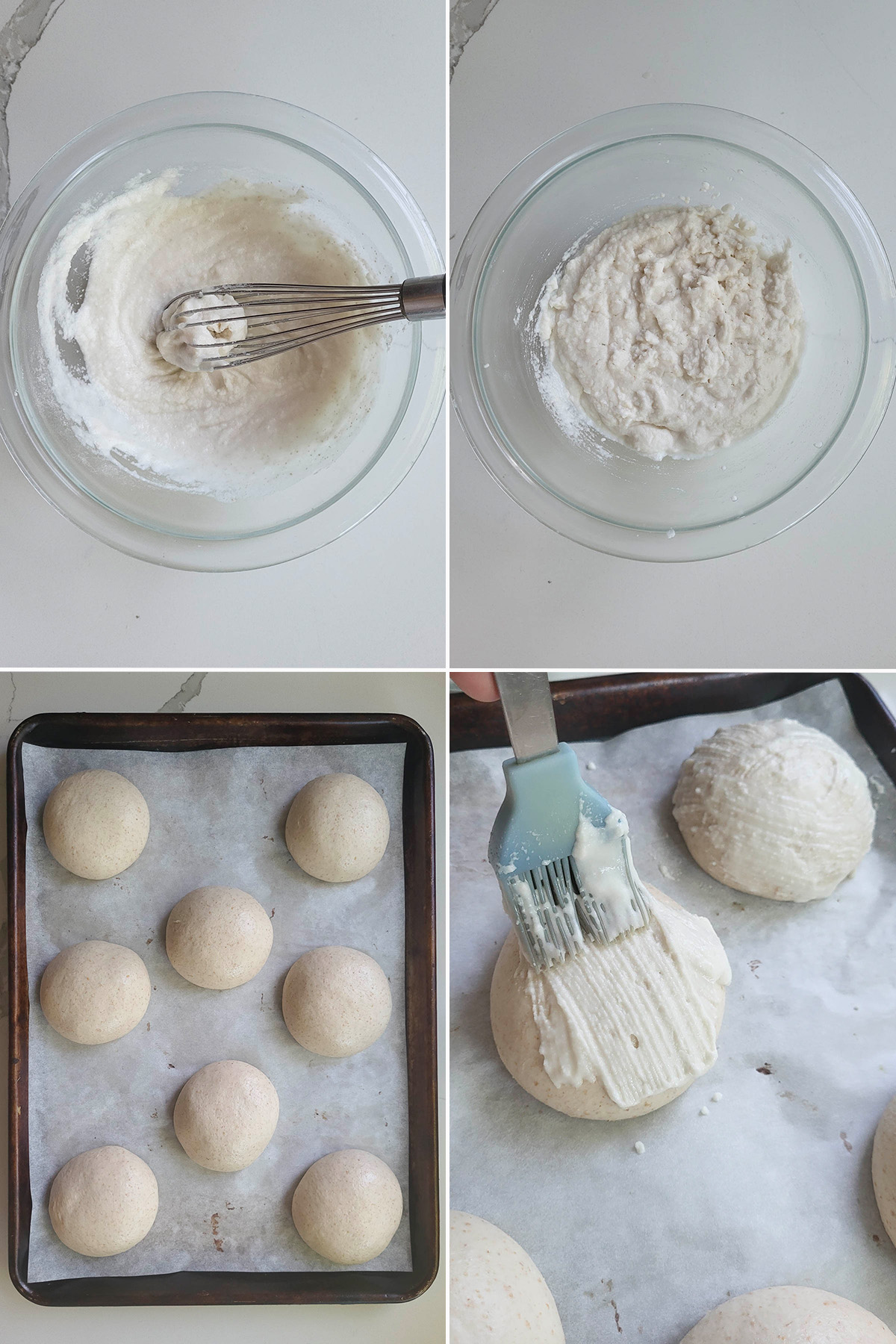
Make the topping
- Combine all the ingredients for the topping in a small bowl.
- Let the topping rise for 30 minutes.
- When the rolls are light and aerated, they’re ready for the topping.
- Brush the rolls or loaf generously with the topping. Set aside for 30 minutes.
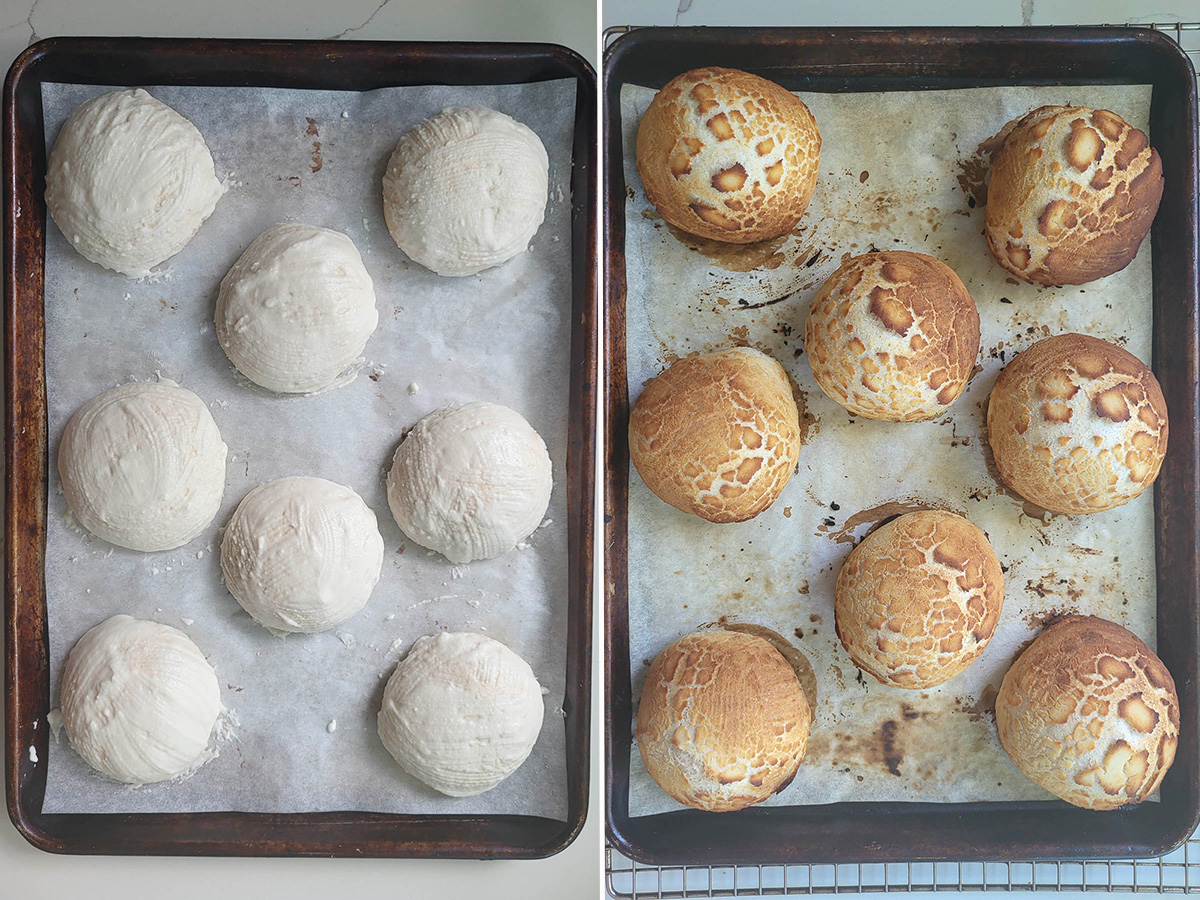
Bake
- After 30 minutes bake the rolls in a 400 degree F oven.
- The rolls are ready when they are light and golden brown.
Work Ahead & Recipe Tips
- If your starter needs feeding, do that the night before or early in the morning of the day you want to make the dough.
- When the starter is at its peak, mix the dough. After the initial fermentation put the dough into the refrigerator. The refrigerator will slow down the fermentation which improves the flavor and texture of the bread. The dough can stay in the refrigerator for up to 2 days.
- Take the dough out of the refrigerator and immediately and shape the loaf or rolls. Leave it to rise at room temperature for 1 1/2 – 2 hours. The exact rising time will vary based on the temperature of the dough and the ambient temperature. A loaf will take longer to rise than rolls.
- If you want to bake the same day, feed the starter the night before. Make the dough in the morning and leave it to ferment until the afternoon. Form the rolls and leave them to rise, skipping the refrigeration step.
Storage
Sourdough Dutch Crunch Bread is best the day it’s baked. It will keep at room temperature for 1-2 days. Rolls or a loaf can be frozen for up to a month.
More Sourdough Recipes
If you keep a sourdough starter, there are plenty of ways to put it to work beyond Dutch Crunch Bread. Here are some of my favorite sourdough bakes:
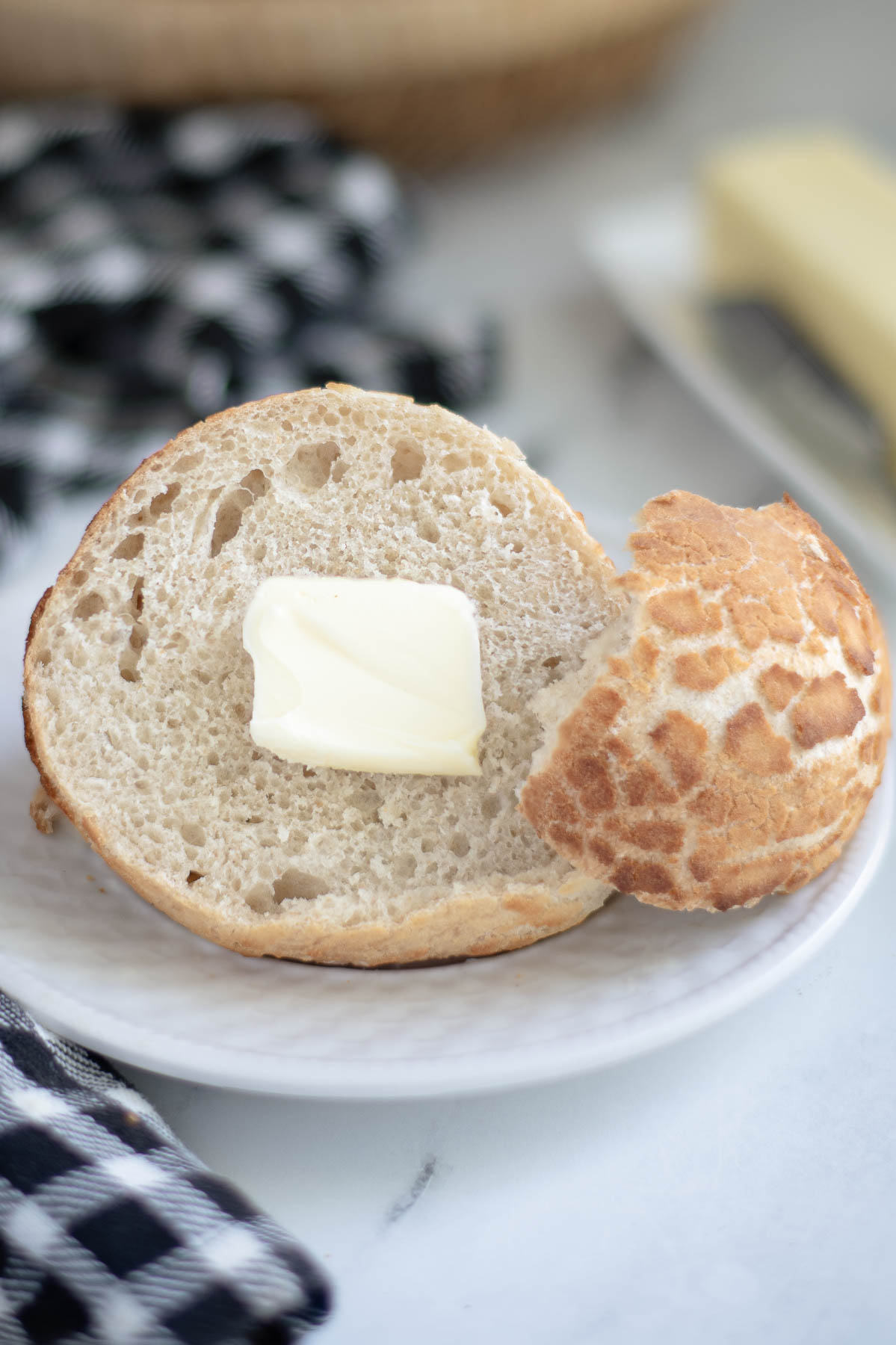
If you love this recipe as much as I do, I’d really appreciate a star rating and a quick comment. Ratings and comments help my recipes show in search results. Thanks!
Sourdough Dutch Crunch Bread
Ingredients
Bread Dough
- 8 oz active sourdough starter (100% hydration)
- 8 oz whole milk (1 cup)
- ½ oz unsalted butter
- ½ oz granulated sugar (1 tablespoon)
- 2 ½ oz wheat flour (½ cup, see note)
- 10 oz all purpose flour (2 cups)
- 1 ½ teaspoons table salt
Topping
- 3 oz rice flour (½ cup)
- 1 teaspoon dry yeast
- 1 ½ teaspoons granulated sugar
- ¼ teaspoon table salt
- 1 ½ teaspoons vegetable oil
- 3 oz warm water (⅓ cup)
Instructions
- Heat 8 oz whole milk in the microwave until it is scalding hot. Stir ½ oz unsalted butter and ½ oz granulated sugar into the hot milk. Set it aside to cool until it's slightly warmer than body temp.
- In a large mixing bowl or the bowl of a stand mixer, combine 8 oz active sourdough starter with the cooled milk. Add 2 ½ oz wheat flour and 1 cup (5oz) of the all purpose flour and mix until it forms a thick batter.
- If you're using a stand mixer, switch to the dough hook. Add 1 ½ teaspoons table salt and the remaining flour. Knead on medium-high speed for 5 minutes. The dough should clear the sides of the bowl and cling to the dough hook. If mixing by hand, add as much flour as you can with a wooden spoon then knead the remaining flour. Knead by hand for 7-8 minutes until the dough is smooth and elastic.
- Transfer the dough to a lightly oiled bowl, turning once to coat. Cover with plastic wrap and set aside at room temperature for bulk fermentation.
- After 1 hour uncover the bowl, lift one side of the dough and fold it into the middle of the dough. Repeat with the other three sides of the dough then flip the dough over. Cover the bowl and repeat the folding procedure every hour for a total of about 3 hours. The dough should be lively and aerated. If it still seems sluggish give it some more time to ferment. The total time will vary based on dough temp, air temp and how active your starter was.
- At this point the dough can be covered with plastic wrap and refrigerated overnight or you can shape and bake the same day.
- To Make Rolls: Turn the dough out onto a lightly floured surface and divide into 8 equal portions. Roll each piece of dough under your cupped hand to form a smooth ball. Set the rolls onto the prepared baking sheet.
- To Make a Loaf: Turn the dough out onto a lightly floured surface and fold the four sides of the dough into the middle to form a packet. Flip the dough. Use two cupped hands to swirl the dough around to form a tight ball. Set the loaf onto a parchment lined baking sheet.
- Cover the baking sheet with a damp kitchen towel and set aside to rise for about 1 ½ – 2 hours. The time needed for rising the dough will vary based on the temperature of the dough and the ambient temperature.
- After the dough has been rising for an hour whisk together 3 oz rice flour, 1 teaspoon dry yeast, 1 ½ teaspoons granulated sugar and ¼ teaspoon table salt. Add 1 ½ teaspoons vegetable oil to 3 oz warm water then add it to the dry ingredients. Whisk until combined. Set the topping aside for 30 minutes until bubbly.
- Brush the topping generously onto the the rolls or loaf. Let the dough rise another 30 minutes. Meanwhile, preheat the oven to 400 °F. Bake until golden brown, about 20-25 minutes for rolls or 40 minutes for a loaf.
Would you like to save this recipe?
As an Amazon Associate and member of other affiliate programs, I earn from qualifying purchases.





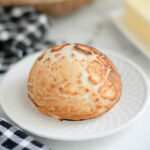





Made the loaf version and put in the fridge overnight. The bread is lovely and the crunch! Thank you for this recipe!